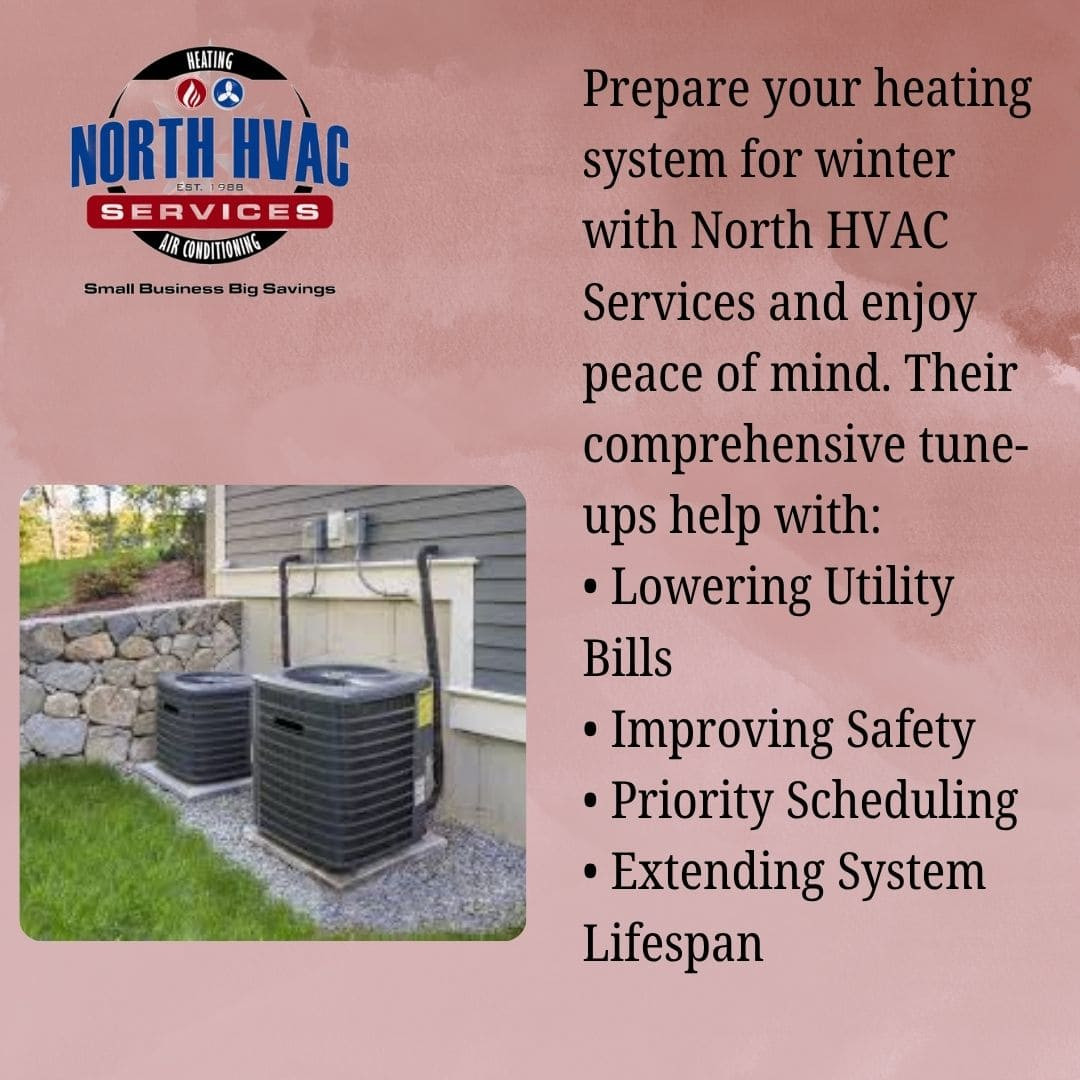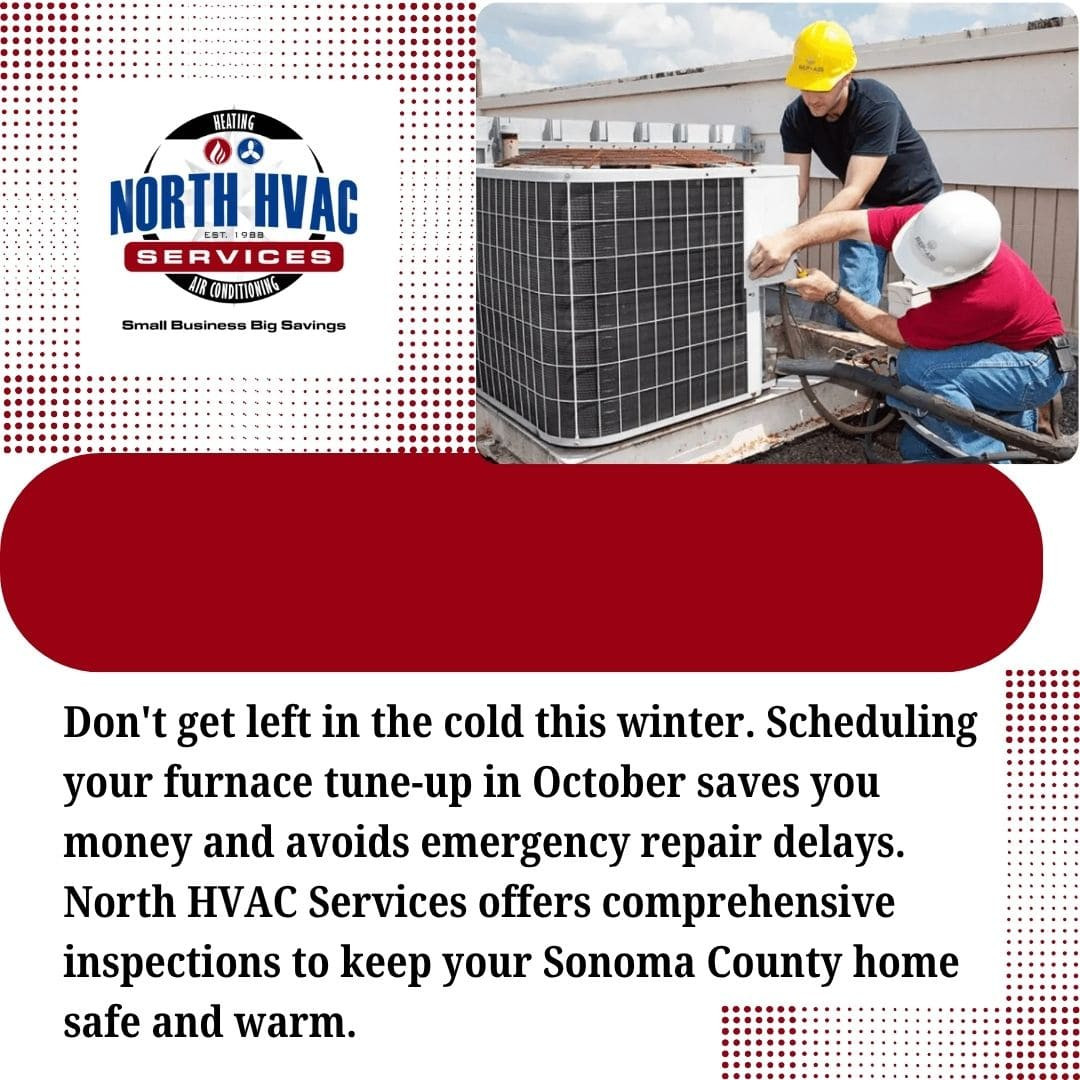Petaluma, CA – North HVAC Services has published recommendations for Sonoma County homeowners to prepare heating systems before winter demand peaks. The family-owned contractor emphasizes October as the optimal timeframe for furnace inspections and tune-ups, citing both cost savings and scheduling advantages over waiting until emergency repairs become necessary.
October Scheduling Provides Financial and Time Advantages
The brief period between summer cooling demands and winter heating emergencies creates opportunities that homeowners often overlook. Service calls scheduled during this shoulder season typically cost $80-$150 with 2-3 day wait times. By comparison, emergency repairs in December average $300 or more before parts, with service delays extending 5-7 days when system failures occur simultaneously across the region.
According to National Weather Service data, Sonoma County experiences:
October daytime highs in the 70s with overnight lows in the 40s-50s
Mid-November overnight temperatures regularly dropping into the 30s
Transition from occasional furnace use to daily heating necessity
The company's published checklist addresses both professional service components and homeowner preparation steps for heating system maintenance that can be completed independently.
Professional Tune-Ups Focus on Safety and Efficiency
Properly maintained heating systems operate more efficiently than neglected ones, translating to measurable reductions in winter utility bills. North HVAC Services' tune-up protocol systematically evaluates components affecting safety, efficiency, and reliability.
Professional Inspection Components:
System Element | Evaluation Focus |
Heat Exchanger | Crack detection for carbon monoxide prevention |
Burners & Combustion | Flame patterns, port cleaning, efficiency verification |
Blower Motor & Fan | Airflow assessment, belt condition, energy consumption |
Thermostat | Temperature accuracy and calibration verification |
Safety Systems | Carbon monoxide testing, gas leak detection, venting inspection |
The published guidance notes that heat exchanger cracks represent safety priorities rather than just performance concerns, as deterioration can allow carbon monoxide into living spaces. Comprehensive inspections require 90-120 minutes compared to 30-45 minutes for basic service.
Homeowner Checklist Covers Accessible Preparation Steps
North HVAC Services outlines tasks homeowners can do to identify potential problems warranting professional attention:
Audio and Visual Inspection:
Listen for rattling (loose panels), banging (delayed ignition), or whistling (belt issues or airflow restriction)
Look for rust stains indicating moisture problems
Check for soot accumulation suggesting incomplete combustion
Examine vent pipes for deterioration
Verify cabinet panels remain secure
Filter Replacement Protocol: Extended wildfire seasons mean filters accumulate smoke particles and ash throughout summer and fall. Starting winter with fresh filters improves both air quality and system efficiency.
Recommended replacement schedule:
During wildfire season: monthly checks
During heating season: monthly checks
Standard replacement: every 3 months minimum
Homes with pets or respiratory concerns: every 1-2 months
Three-Foot Clearance Rule: Remove anything stored within three feet of the unit, including holiday decorations, paint cans, cardboard boxes, cleaning supplies, and flammable materials. Restricted airflow reduces efficiency and creates safety hazards when combustion air becomes limited.
What to Look for in an HVAC Contractor in Santa Rosa, CA:
Valid California C-20 HVAC license
Current liability insurance
Workers compensation coverage
Manufacturer certifications for the brands they service
Established local presence and references
Clear written estimates with detailed scope
Transparent pricing without pressure tactics
Warning Signs Requiring Immediate Professional Evaluation
Safety Concerns Demanding Immediate Action:
Gas smell (system should be shut down before calling for service)
Yellow or orange pilot light indicating incomplete combustion
Excessive dust around vents suggesting combustion problems
Visible soot accumulation
Cabinet hot to touch
Performance Issues:
Problem | Indication |
Uneven heating between rooms | Ductwork problems or inadequate sizing |
Frequent cycling | Thermostat issues or airflow restrictions |
Rising energy bills | Efficiency losses from aging or poor maintenance |
Rooms take longer to heat | Reduced system capacity |
Systems approaching 15-20 years of service life experience increasing repair frequency, decreasing efficiency, rising parts costs, and component obsolescence. When repair costs approach 50% of replacement value, or homeowners face the second or third significant repair within two years, replacement economics often favor installing new systems.
Modern furnaces offer heating cost reductions compared to units from the early 2000s while meeting current California seismic and efficiency codes. Updated systems incorporate safety improvements and environmental standards that older units lack.
Service Level Distinctions Matter for Long-Term Reliability
Not all tune-ups provide equal value. Basic 30-45 minute appointments typically cover filter replacement, thermostat checks, and visual inspection with limited documentation. Comprehensive 90-120 minute inspections include complete component examination, safety system testing, airflow and temperature measurements, plus detailed condition reports.
The company recommends homeowners verify that contractors hold valid California C-20 HVAC licenses, current liability insurance, workers' compensation coverage, and manufacturer certifications. Clear written estimates with detailed scope and transparent pricing without pressure tactics indicate established accountability.
Red flags include prices dramatically below market rates, high-pressure tactics, vague service descriptions, absence of written estimates, inability to provide insurance certificates, and proposals based on phone descriptions without examining the actual system.
Contact North HVAC Services Today
North HVAC Services currently maintains appointment availability within days. This scheduling flexibility typically disappears once the heating season arrives in full force, as system failures increase simultaneously across the region.
The Diamond Authorized Mitsubishi dealer and Authorized Factory Dealer for Trane and Day & Night equipment has served Marin and Sonoma Counties for 37 years. The company specializes in conventional gas furnaces, air conditioning systems, and heat pump all-electric Mitsubishi high-efficiency mini-split systems, plus indoor air quality filtration upgrades.
Homeowners seeking to schedule fall furnace tune-ups before November demand increases can reach North HVAC Services at (415) 845-6910 or email [email protected]. The company's office is located at 3855 Cypress Dr #H, Petaluma, CA 94952. Additional information about heating system maintenance and furnace installation in Santa Rosa, CA, is available at northhvacservices.com.





